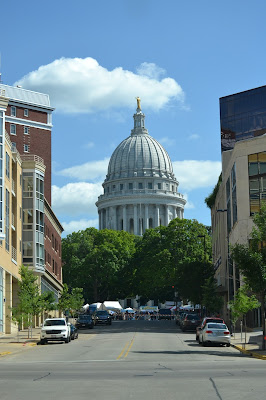 |
| I wish this was the cave I was visiting |
I have been in a cave in Wurttemberg. Not an actual cave, but I've been in my basement research cave, after a MAJOR breakthrough this summer.
Reality also struck with both highs and lows in my family over the past few months. My younger son won the Illinois high school state cross country title and signed for a wonderful college scholarship. My older son's cross country team was second in the NAIA college championship and he's on track for another semester on the Dean's List. The lows came by way of my father's death, my maternal grandmother's death, and one of my son's coach's death. It was a very emotional fall.
Genealogy is my "touchstone," the one thing that keeps my brain functioning and me tethered to some sort of reality.
On with the show.
My grandmother that recently passed provided my German ancestry. Her mother was full Prussian (I know that's not an ethnicity but it's where her people lived for hundreds of years) and her Hummel father was mostly German by way of southwest Germany near Stuttgart. I have a copy of the family's church record from Michigan where they finally settled giving clues to their German villages. But I was very uncertain how to search for records. I contacted fellow genealogist Barbara Schmidt (@BarbFFm on Twitter) and she helped me get an idea of the village and Lutheran parish system. After that, I took a chance and ordered some FamilySearch microfilms for the area and crossed my fingers. It worked.
Having some sense of the Hummel family already, I started working with my great-great-great-grandmother's Ebinger line, which I knew only by the two children who emigrated to America. Fortunately, my microfilm guesses were correct as I found both of their births in the Dafern parish records. Then with lots of scrolling, it was off to the races. Suddenly, I had a huge German family!
 |
| Johann Lorenz Hummel (1843-1901) Christina Karolina Ebinger (1849-1895) |
Some of the interesting things I have encountered (your mileage my vary):
- the vital records are pristine, accurate, and cross-referenceable by date/age and parents/father
- you definitely need creative database skills
- surnames are underlined about 99% of the time
- Jerg of the 1600's became Georg of the 1700's
- Johannes is not the same as Johann, but Hans and Johann are usually interchangeable
- you "hope" for an illegitimate birth because the pastor went out of his way to describe the circumstances of the birth, then "hope" the father acknowledged the child
- learn to read upside down because that's how many illegitimate births were noted!
- in the 1730's, there was a sudden use of astrological symbols in the birth records
- the records are a "moveable feast" because all the births may be in one parish but the marriages in the neighboring parish
- and so much more!
I am (proudly) at the name-collecting stage. This has been a fascinating few months of work. Here is my database if you'd like to check for common ancestors.
Come find me in Germany (in my mind)!
* German diacriticals and spellings omitted here because...American keyboard ;)
© 2016 Sally Knudsen
Photo credit: By Enzyklofant (Own work) [CC BY-SA 3.0 (http://creativecommons.org/licenses/by-sa/3.0)], via Wikimedia Commons


















